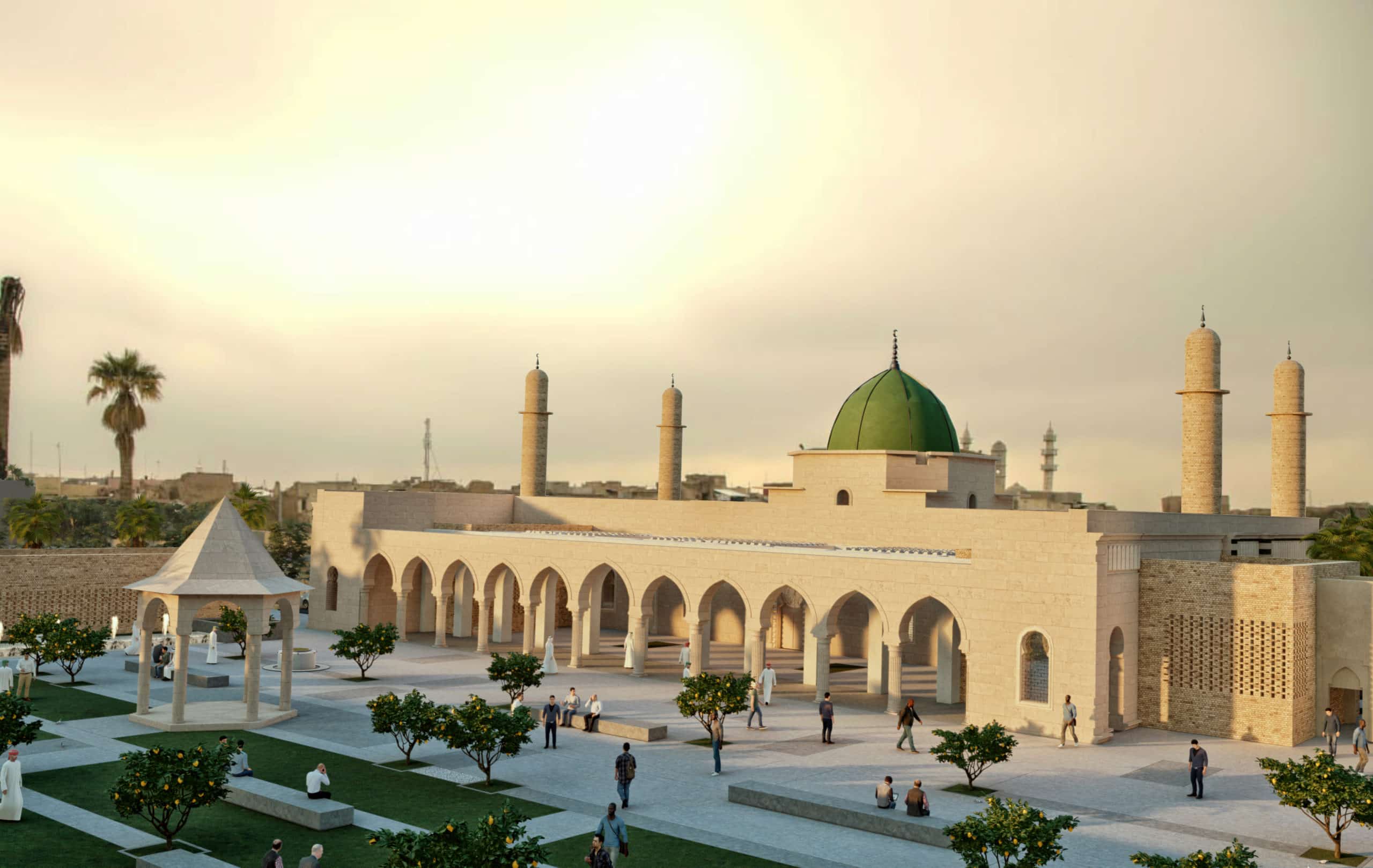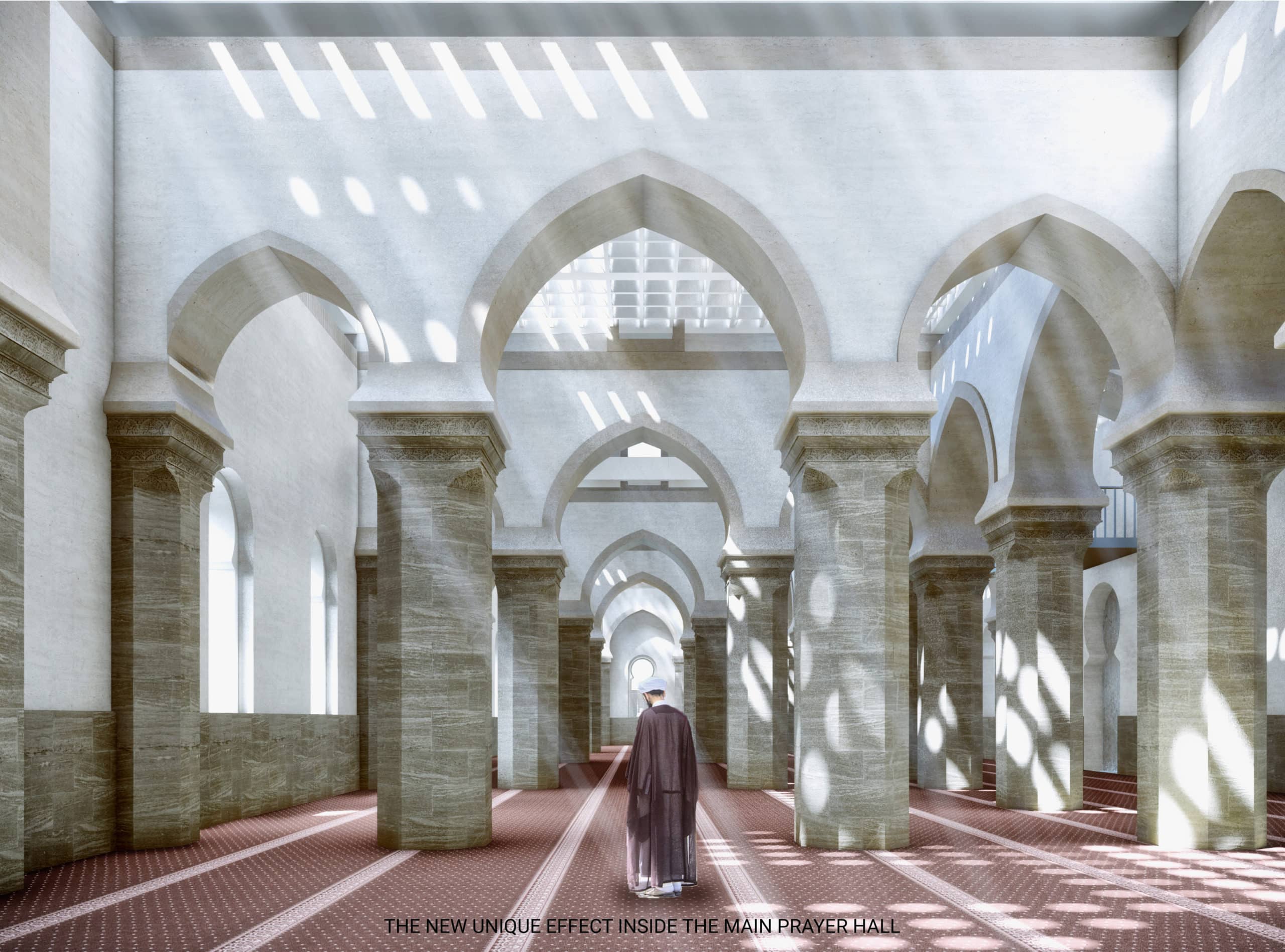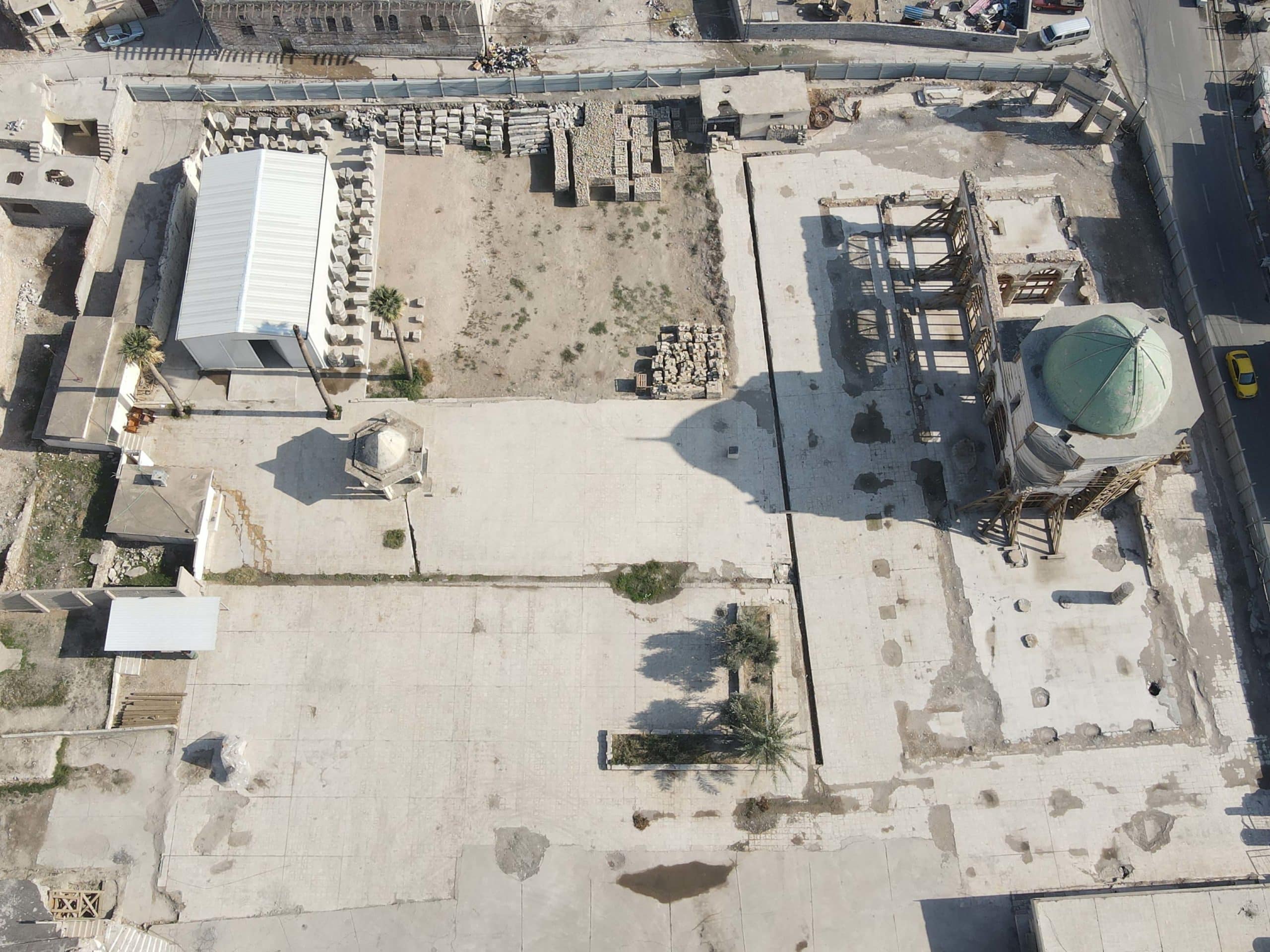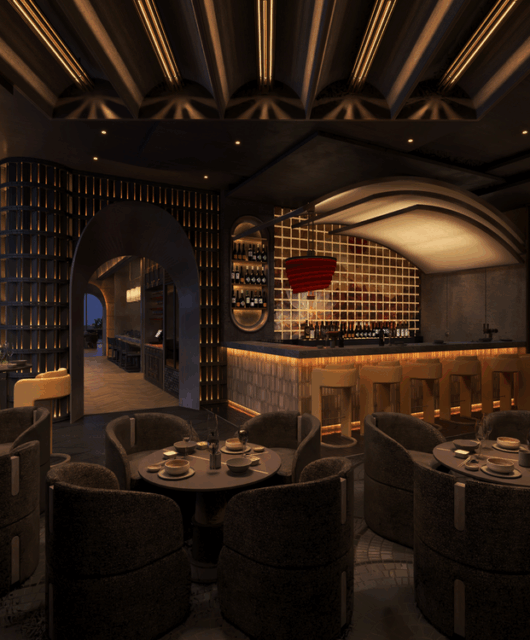
UNESCO announced the winning architectural design of the international competition to rebuild Al Nouri Mosque Complex in Mosul. Here’s all we need to know from the start of this competition to the winning entry, and what lies ahead for this prestigious project…
This has turned into a fruitful and amazing journey. It all started when last year The United Nations Educational, Scientific and Cultural Organization (UNESCO) announced the launch of an international design competition for the reconstruction and rehabilitation of the Al Nouri Complex in Mosul, Iraq. The contest, which was administered by the UNESCO Office in Iraq, was organised in coordination with the Ministry of Culture, the Sunni Endowment in Iraq, and with the financial support of the United Arab Emirates.
Endorsed by the International Union of Architects (UIA), registration for this project opened on November 16, 2020, with the contest welcoming submissions from architects and engineers from across the world.

Selected from among 123 entries, the winning design for a “Courtyards Dialogue,” as the winning project is called, was presented by a team of four partners Salah El Din Samir Hareedy, Head of Team, Khaled Farid El-Deeb, Sherif Farag Ebrahim, and Tarek Ali Mohamed, and four designer architects Noha Mansour Ryan, Hager Abdel Ghani Gad, Mahmoud Saad Gamal, and Yousra Muhamed El-Baha.
The winning design receives a $50,000 prize and will be awarded the contract for the detailed design of the complex. The runners-up will be awarded prizes in recognition of their work, $30,000 will be given to a team from India, followed by $20,000 to an entry from Spain, $15,000 to teams from Mexico and Belgium, and $10,000 to a team of architects from the United Arab Emirates and France.
“The selection of the winning design under the international competition for the reconstruction and rehabilitation of the Al-Nouri Mosque complex is a significant milestone under the ‘Revive the Spirit of Mosul’ initiative. In 2018, the UAE took the lead and joined UNESCO on this historic endeavor, inspired by the history and legacy of Mosul and the resilience and strength of its people. Reaching this important milestone has brought us closer to the realization of a shared commitment to restore social cohesion and a spirit of fraternity and tolerance in Mosul once again,” says Noura bint Mohammed Al Kaabi, United Arab Emirates Minister of Culture and Youth.

The project foresees the reconstruction of the mosque’s Prayer Hall and the organic integration of the entire complex – the largest public space in the Old City of Mosul – in its urban surrounding, through a series of open public spaces and five entry points from the adjoining streets.
The jury for the competition included:
-Howayda Al-Harithy, Saudi Arabia: Professor of Architecture and Director of the School of Design at the American University of Beirut.
-Ahmed Alomary, Iraq: Head of the Department of Architectural Engineering at the University of Mosul
-Raya Ani, Iraq: FAIA, LEED AP, Founder and Design Director at RAW-NYC Architects
-Xavier Casanovas, Spain: Expert in urban regeneration and sustainable rehabilitation and professor at the Polytechnic University of Catalonia
-Amel Chabbi, United Arab Emirates: Head of the Conservation Section at the Department of Culture and Tourism for the Emirate of Abu Dhabi
-Shahira Fahmy, Egypt: Architect, urbanist, creative researcher and founder of Shahira Fahmi Architects
-Wang Shu, China: Architect and co-founder of Amateur Architecture Studio
-Marina Tabassum, Bangladesh: Architect and principal of Marina Tabassum Architects
-Shadia Touqan, Palestine: Architect, urban planner and director of ARC-WH (UNESCO Category 2 Centre)
-Jerzy Uścinowicz, Poland Professor of Architecture and Head of the Division of Architecture of Local Cultures in the Faculty of Architecture of the Białystok University of Technology.
We interviewed three of the jury members, to share their views of the round-up of this prestigious competition.
Amel Chabbi
Conservation Manager
Historic Environment Department
- What qualities were you most looking forward to in the winner?
For me, it was essential that the winning design successfully integrates public open spaces, creatively connect the main courtyard in front of the Prayer Hall with the new functions required, and sensitively treat the rehabilitation of the remains of Prayer hall and other historic buildings. It was also important that the winner reinstate the whole complex and the mosque as an urban node in the city not only as a place of communal worship but also as a key driver for community development and social interaction. - How would this project revive the history of Mosul and present it as a global landmark like one never seen before?
Mosul means “The linking Point” in Arabic. Indeed, Mosul was, historically, a city of cultural understanding with a vibrant cultural life. The new al Nouri mosque will, I hope, become the new “linking point” of the city. The reconstruction of this international landmark is a symbol of Mosul and a testament of the will of Moslawis to re-emerge stronger and more united.
…………………………………………………………..
Dr. Ahmed Yousif Alomary
Assistant Professor
Head of Dept. of Architectural Engineering
University of Mosul-Iraq
- How would you describe your approach to this design competition?
In the beginning of the jury sessions, I gave a lecture to the jury regarding Mosul’s architecture and its characteristics. Thus, I presented them with a deeper sense of the existing cultural heritage context of Mosul’s Old City. The focus of the competition was to select a project , which through its design would meet, to the best extent possible, requirements such as:
– being a good integration within the urban context,
– having a positive influence on the context of social interaction,
– expressing the local identity,
– being a sustainable design,
– upgrading architecture quality,
– is an ecological solution, etc.
All these requirements are within the framework of Islamic architecture and in the spirit of local architecture. Some of the received projects were far from the Arabic and Islamic architecture, and subjecting a different concept, alien to the context of Mosul Old City. I believe, this may be due to the lack of knowledge of Mosul’s architecture. The winning project was developed by an Egyptian team, and I believe, that it was the closest to the architectural scene of the city. This may refer to the civilizational rapprochement between the two countries.
…………………………..
Xavier Casanovas
President de RehabiMed
- Are you happy with the response and entries you received for this competition?
The response to this competition has been extraordinary, both for the number of participants and the high quality of the proposals submitted. Another aspect to highlight, is the diversity of countries and cultural environments of the participants, who have fully understood the importance of the city of Mosul and the Al Nouri complex. They have correctly interpreted the challenges posed today in their reconstruction. - How would this competition benefit the winner in terms of knowledge, career growth, and international positioning?
We are talking about a competition that has had a great international impact and that has mobilized hundreds of teams from all over the world. For the winning team, having participated and winning the competition will mean that they will be better known and will surely be presented with new opportunities for new projects. In any case, in my opinion, both the winning team and most of the participants have made the effort to prepare interesting and very elaborate proposals, not so much to position themselves internationally, but out of solidarity and commitment to the city of Mosul, while contributing to the recovery of the daily life of its inhabitants.……………………………………..







